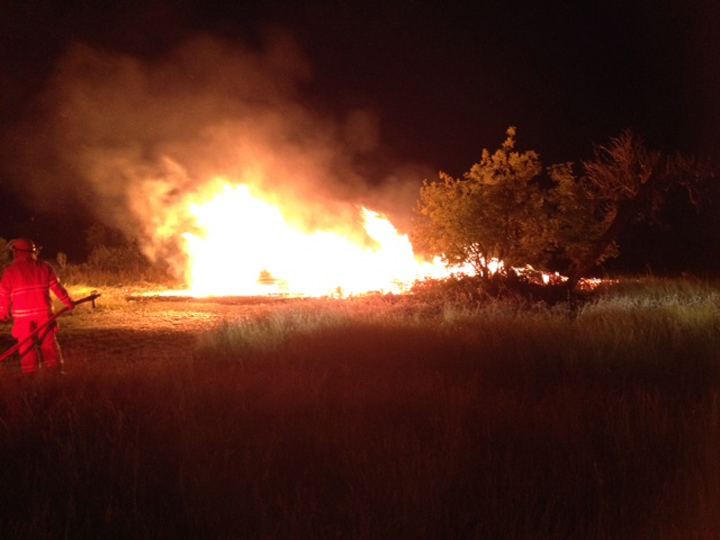WINNIPEG – The historic “big house” on the Criddle/Vane homestead near Shilo, Man., burned to the ground in a suspicious fire on Wednesday, RCMP say.

The home, which is located about 10 kilometres southeast of CFB Shilo, was empty when it burned at about 10 p.m.
The volunteer Wawanesa and District Fire Department was unable to save the home, which was fully engulfed in flames when RCMP received a report about the fire.
The home had been uninhabited since the last family members moved out in 1960, according to the Manitoba Conservation webpage on the homestead, which is now a park.
The home was more significant for the colourful, unconventional family it housed than for the actual structure, said Gordon Goldsborough, the Manitoba Historical Society webmaster and journal editor.
WATCH: Tour the Criddle-Vane house before it burned via this YouTube video.
Goldsborough photographed the house in 2010 and said like other historic sites he’s photographed, it wasn’t in particularly good shape.
“It’s more of a symbolic loss,” he said. “It wasn’t in any way really noteworthy.”
What makes the site interesting is the family that homesteaded on it – Percy Criddle, his wife Alice, his mistress Elise Vane and his many children.
Criddle, an English gentleman, had five children with Elise Vane, then married Alice Nicol. After his marriage to Alice in 1872, he had one more child with Elise and eight with Alice.
Criddle uprooted both families and brought them to Manitoba in 1882, where they homesteaded through tough times and later built the large house that burned on Wednesday.
“The place they lived was pretty remote,” said Goldsborough, “probably what you want if you were living an unconventional lifestyle.”
The family built tennis courts – the children cut the grass with knives to create the playing area, according to Criddle’s diaries – and a golf course at the homestead.
The diaries are a wealth of information about the time, Goldsborough said, but Criddle’s biggest contribution to the world was probably his children, who became well-known in a variety of fields.
There are competing books about the family, with fond memories written by his Criddle granddaughter Alma in the book Criddle-de-Diddle-Ensis, published in the 1970s, and a critical look at his legacy by his Vane great-granddaughter Oriole Veldhuis in The Biography of Elise Vane.
RELATED LINKS:
- Criddle/Vane homestead, Manitoba Historical Society
- The Criddle/Vane legend and legacy, virtualmuseum.ca
- Discovering Manitoba: The Criddles of Aweme, Manitoba Regional Tourism Network
- The Biography of Elise Vane: For Elise




















Comments